|
Greeff
Genealogy Journal
Journal of the Greeff and related families, No
11, July 2008.
Editor: Francois Greeff.
Index of previous editions
Home
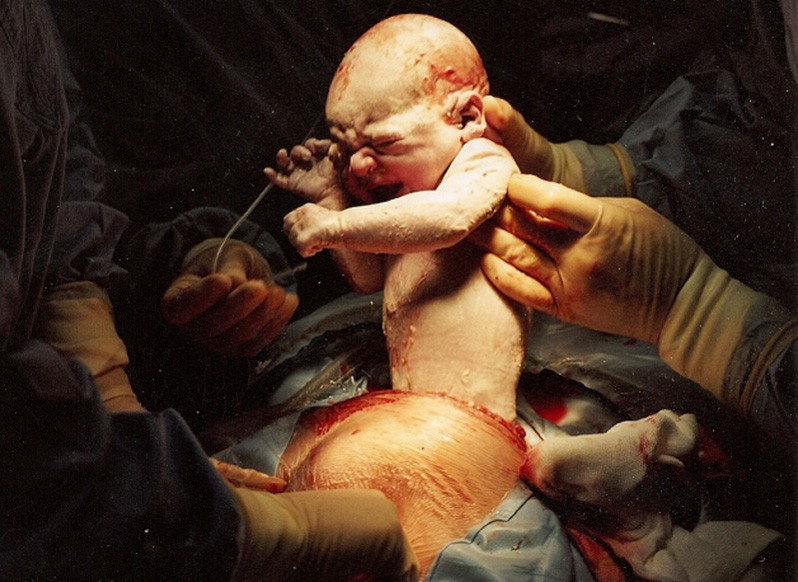
"The Unwilling Participant"
Francois Labuschagne, born by Caesarean section, 18 March 2005.
(Thanks to Sanet Labuschagne, born Greeff, and her father, Jan Greeff, for the photo, which was taken by Sanet's husband, FJ Labuschagne.)
Contents
Important Notices
1.To go to our web site, please search just one word, Greeff, on Google, and then click on our link (www.Greeff.info). It helps to get our page higher up in the search results, which makes it easier for newcomers to find our site.
2. New telephone number for Francois Greeff : 0044 20 8123 4224 (UK 020 8123 4224). To submit articles to the Greeff Genealogy Journal, email Greeff@Greeff.info.
Greeff Christmas Dinner.
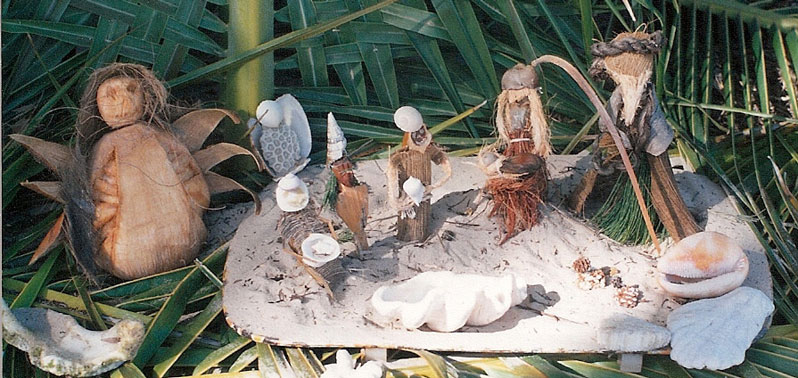
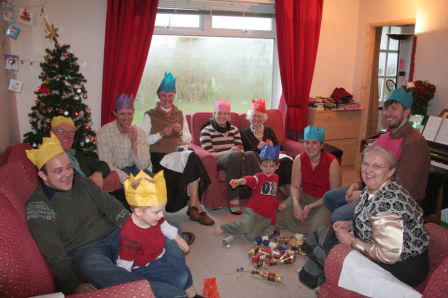 Chris Greeff just reminded me that Christmas is coming.Chris will be inviting all the members of the Greeff family in America to enjoy a Christmas party with him on the West Coast of America this year. He says that he regrets that the tradition of sharing Christmas dinner with family members has fallen into disuse in recent years. He wants to revive the tradition, and bring all his close relatives together for Christmas dinner this year. I say well done, Chris! Chris Greeff just reminded me that Christmas is coming.Chris will be inviting all the members of the Greeff family in America to enjoy a Christmas party with him on the West Coast of America this year. He says that he regrets that the tradition of sharing Christmas dinner with family members has fallen into disuse in recent years. He wants to revive the tradition, and bring all his close relatives together for Christmas dinner this year. I say well done, Chris!
I thought that this was was an excellent idea. Now I write to remind each and every member of the entire Greeff clan to get in touch with the rest of the family today. Phone your cousins right now and invite them for Christmas. It is time, right now, to arrange Christmas dinner. Now is the time to organise who has Christmas dinner where.
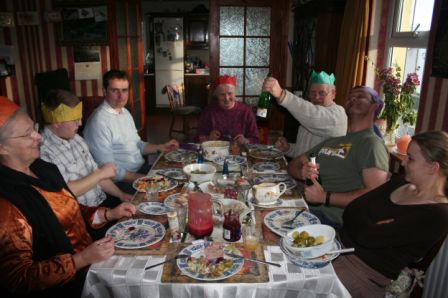 Building a family tree, and maintaining the Greeff website, is not just about keeping paper records. To me, genealogy is also about having family and real relationships with the people you love. The Greeff family web site has been instrumental in bringing long lost family members together again, in one case the website brought together two members of one family who had not seen each other for half a century. It is when such things happen that the pursuit of genealogy is most rewarding. It happens, as we grow older, that we moved to different parts of the world to different parts of the country, and that we have contacted at his less and less frequent, until our own family members are nearly forgotten. Now is the time to revive those forgotten relationships, and to bring the family together again. I also want to remind you to take group photographs of the entire family, cousins and all, over the Christmas period. Building a family tree, and maintaining the Greeff website, is not just about keeping paper records. To me, genealogy is also about having family and real relationships with the people you love. The Greeff family web site has been instrumental in bringing long lost family members together again, in one case the website brought together two members of one family who had not seen each other for half a century. It is when such things happen that the pursuit of genealogy is most rewarding. It happens, as we grow older, that we moved to different parts of the world to different parts of the country, and that we have contacted at his less and less frequent, until our own family members are nearly forgotten. Now is the time to revive those forgotten relationships, and to bring the family together again. I also want to remind you to take group photographs of the entire family, cousins and all, over the Christmas period.
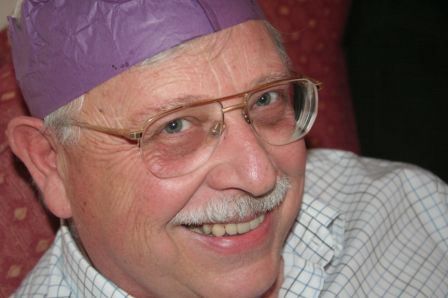 Please write to me and let me know who and where the Greeff family will be gathering this Christmas. Who will come together in Germany, in Switzerland, England, South Africa, America, Canada, Australia, Cuba and Quatar? Please write to me and tell me about your plans for Christmas. Please write to me and let me know who and where the Greeff family will be gathering this Christmas. Who will come together in Germany, in Switzerland, England, South Africa, America, Canada, Australia, Cuba and Quatar? Please write to me and tell me about your plans for Christmas.
I know that Jan Greeff and his wife usually goes to Pomene in Mozanbique, and that his children and grandchildren usually join them there.
Hendro and his wife Ina will be flying from South Africa to the UK to join their children and grandchildren for Christmas.
Chris Greeff writes to say that he will be hosting two separate events:
"Hi Francois-
This would be a CHRISTmas PARTY, held a week or 2 before Christmas - really a low key cocktail party for any Greeff's in Southern California that wished to get together and get to know each other. (Hopefully Tiffany Hunter and her family too!) Christmas Dinner on Christmas Day is reserved more for closer family members. This would be for cousins who have never met - that sort of thing.
Chris Greeff"
If you want to accept Chris' invitation, please email Greeff@Greeff.info
Greeff Genealogy
Our latest research news:
Below: Viljoen Greeff.
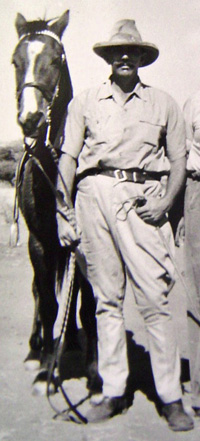 Three new pages have been added to the Greeff Family Web site. Click on the blue links to see the new pages. Don't skip the first two links because they are both very important and interesting pages, with much information. Three new pages have been added to the Greeff Family Web site. Click on the blue links to see the new pages. Don't skip the first two links because they are both very important and interesting pages, with much information.
Huckenbach
The release of the English translation of the book "Geschichte der Familie Greeff aus der Huckenbach", by Prof Victor Bredt (1941. Marburg, Germany). The English title is "The History of the Family Greeff of the Huckenbach". The book is very interesting, and it is a fine example of tthe value of family history research to future generations. The book also forms the cornerstone on which ALL Greeff research is built, since all Greeff families originate from Germany. This book is probably the single most important Greeff document ever.
This monumental work is mostly the result of the excellent work done by Viljoen Greeff in Heidelberg, South Africa. The entire Greeff clan owes him a great debt of gratitude.
Please have a look at this web page because we need your help to update the information in the book from 1941 to 2008. If you have any Greeff relatives in Germany, please ask them to help with the update too.
Turning 50
Defining ONE FAMILY as "the descendants of Hendrik Adriaan Greeff, by any present surnames". This page also describes the very unusual way in which the people of this unique family celebrate their 50th birthdays.
Archives
Where to find Greeff documents and information, for your personal family tree.
Geschichte der Familie Greeff aus der Huckenbach
Update of Information from 1941 to 2008
The book by Victor Bredt has been translated into English, and is in the final stages of editing. The translated text will be put on the Greeff Family web site so that everyone can read it. The purpose of putting it on the web page before publishing it in book form is so that:
1. The whole family can comment on it, and help to correct any mistakes in the translation.
2. The whole family can add to it so that the book is brought up to date.
I appeal to all people, regardless of what their surnames may be, to contact me if they are related to anyone in the book.
I ask that members of the book send me their family trees, so that these can be added to the tree on the web site. So far more than 450 people from the book have been added into the tree on the Greeff Family Website, and Lee Greeff in Pretoria is working very hard to add all the rest.
To see the family tree as it is now:
1. Go to www.Greeff.info (Home Page)
2. Click on Search
3. Click next to "All Families" and Select "Greeff in Germany"
4. Click enter.
This method can be used to search for a specific person in the family too. When you see a person's personal record, try to click on 'Ancestors' or on 'Descendants'. It helps to get a good picture of the family.
A descendants' chart (Ahnentafel) can be seen at:
http://www.greeff.info/tng01/register.php?personID=I130&tree=GreeffinGermany&generations=14
If you have any material that should be included in the update of this book, please contact me. In particular I am looking for:
1. New family trees (births, marriages and deaths).
2. Copies of old documents
3. Photos of old family Paintings
4. Photos or copies of old paper photographs
5. Photos of family graves
6. Photos of any land or buildings owned by Greeff
7. Photos of ALL members of the family, living or dead.
My contact details are:
Francois Greeff
36 Aston Road
London
AW20 8BE
Phone: 0044 20 8123 4224
Mobile 0044 79 6372 2345
Email: Greeff@Greeff.info
|
Thank you very much...
Last month's contributions to research:
The success and growth of the Greeff family tree is the consequence of hundreds of people from all over the world who each contribute to one common goal. During July alone all the people in the table contributed to the pool of Greeff knowledge in some way, and they all helped to build the Greeff family tree. I thank them for all that they manage to achieve when their efforts are added together.
|
Lee Greeff |
|
Ann Tiran |
Jan Greeff |
Natanja Greeff |
Caspar Greeff |
Janet Melville |
Peet Greeff |
Annemarie Folkus |
Andre Greeff |
Rina Greeff |
Eileen & Marty Russell |
Talon Greeff, USA |
Ute Greeff, Germany |
| Daniel Jacobs |
Lucas Rinken |
Viljoen Greeff |
| Klaus Greeff, Switzerland. |
Michael Stockhausen |
Ellen Harmse |
| Yvette Greeff |
Ron Barnard |
Oliver Greeff, Germany |
| Annelie Els |
Richard Wheeler |
Martie du Toit |
| Hetta Scholtz |
Wilma Maritz, Carnarvon |
Maureen de Villiers |
| Rina Brink |
Louis Hurn |
Fred & VJ Greeff |
| Faan Greeff |
Louis Echbert Greeff |
Louis Egbert Greeff IV |
| Jan Engelbrecht |
Echtbertus Hendrik Daniel Greeff |
Alisan Greeff |
| Robin Griffiths |
Alta Griffiths |
Vetseun Cloete |
| Corrie Greeff, Oudtshoorn |
Chris Greeff, California |
Jonathan van Niekerk |
| Jack Greeff |
Hennie Greeff, Sandton |
Helena Liebenberg |
Brian Barrett |
Claudie Jooste |
Barbara Cailliau |
My apologies and gratitude to all the people whose names I have inadvertently omitted from the list.
Who am I
Admiral Friedrich Oskar Ruge, married to Ruth Greeff.
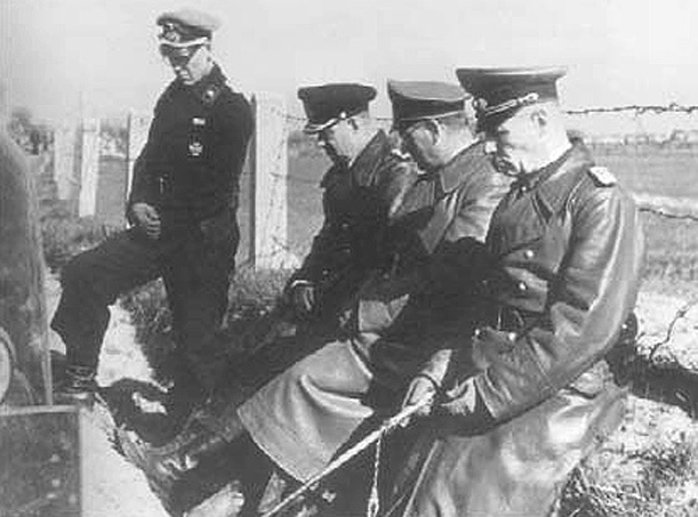
Rommel (right) with his closest staff members, his Chief of Staff, General Hans Speidel (centre), Chief Naval Aide, Admiral Friedrich Ruge (left), and his personal aide, Captain Helmuth Lang (standing). All of them were heavily involved in the anti-Nazi conspiracy within the Wehrmacht. Picture, May 1944.
"The Citadel Archives & Museum
171 Moultrie Street
Charleston, South Carolina 29409
Telephone 843.953.6846
Fax 843.953.6956
Vice Admiral Friedrich Ruge Papers
Biography:
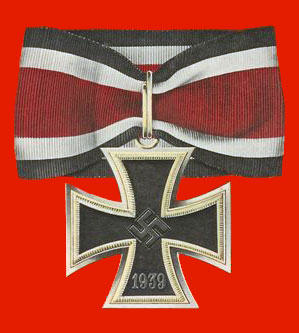 Vice Admiral Friedrich Ruge was born in Leipzig, Germany December 24, 1894. He was the son
and grandson of German educators. Friedrich Ruge joined the German Imperial Navy as a cadet in March
1914. During World War I, he participated in the 1914, 1915, and 1916 Baltic Sea operations and in 1917
and 1918 destroyer raids in the North Sea and English Channel. Vice Admiral Friedrich Ruge was born in Leipzig, Germany December 24, 1894. He was the son
and grandson of German educators. Friedrich Ruge joined the German Imperial Navy as a cadet in March
1914. During World War I, he participated in the 1914, 1915, and 1916 Baltic Sea operations and in 1917
and 1918 destroyer raids in the North Sea and English Channel.
Following the 1918 Armistice, Admiral Ruge, as a young officer aboard the German destroyer B-112, was interned at Scapa Flow and there in June 1919, played a key role in the scuttling of the German
Fleet.
By 1920, he had returned to Germany to continue his naval career, this time in the service of the
new Weimar Republic. Most of Admiral Ruge's professional activities during the next two decades
centered on mine warfare. From 1920 to 1923 and from 1928 to 1932 he was active in mine development
work, which included duty as commanding officer of a minesweeper from 1921 to 1923. From 1924 to
1926 he attended the Berlin Technical College. From 1932 to 1934 he was senior officer of a
minesweeping flotilla, and in 1937 became the Senior Officer Minesweepers in the German Navy.
With the coming of World War II, Admiral Ruge participated extensively in the Polish Campaign
of 1939 and in the North Sea-English Channel operations of 1940. He remained in France from 1940 to
1943. In February 1940, he was promoted to the rank of Commodore, in 1942 to Rear Admiral and in
1943 to Vice Admiral.
Early in 1943 he was sent to Italy where he served as Senior German Naval Officer until midsummer
of that year. In November 1943, he was appointed naval advisor to Field Marshal Rommel who
was just then entering upon his duties as one of the principal anti-invasion defenders of the Atlantic Wall.
From August 1944, until the end of the war Admiral Ruge served in Berlin as the Kriegsmarine's
Director of Ship Construction.
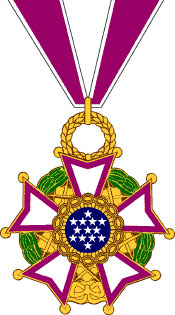 After World War II, Admiral Ruge spent several months as a prisoner of war, and in 1946 he
returned to Cuxhaven where he found employment as a writer, translator, and as a teacher of both English
and German. From 1949 to 1952 he was one of four German flag officers who comprised the Naval
Historical Team sponsored by the U.S. Navy at Bremerhaven. During this period he was also elected as a
political independent to the town council of Cuxhaven. After World War II, Admiral Ruge spent several months as a prisoner of war, and in 1946 he
returned to Cuxhaven where he found employment as a writer, translator, and as a teacher of both English
and German. From 1949 to 1952 he was one of four German flag officers who comprised the Naval
Historical Team sponsored by the U.S. Navy at Bremerhaven. During this period he was also elected as a
political independent to the town council of Cuxhaven.
With the entry of the Federal Republic of Germany into NATO and the establishment of the
Bundesmarine, Admiral Ruge was called out of retirement and appointed Inspekteur der Bundesmarine,
the equivalent of the U.S. Chief of Naval Operations. He held that post until his retirement in 1961.
Settling in 1961 in the South German university center of Tubingen, Admiral Ruge continued his
active career as a writer and lecturer. In the latter capacity he served as a faculty member at Tubingen
and at numerous other German centers. In 1967 he became associate professor in political science at the
University of Tubingen.
In addition to his other activities Admiral Ruge was chairman of the “Arbeiskreis fur
Wehrforschung” (Association for Military Historical Research) and was President of the League of the
Veterans of the Bundeswehr. He was also an active member of Rotary International. Admiral Ruge's
first visit to America was in 1926. He next came in 1952 when he was guest lecturer at the U.S. Naval
War College at Newport. Later visits were made in 1956, 1959, 1960, 1961 and May 1964. He resided at Linsenbergstrasse 29, Tubingen, Germany and died in 1985.
Scope and Content Note:
The Citadel purchased the papers of Vice Admiral Friedrich Ruge from Mr. William M. James
of Winston Salem, North Carolina on March 18, 1974. Mr. James had compiled a collection of
interviews, articles and correspondence with German and British officials of World War II. Admiral
Ruge, who was one of Mr. James correspondents, gave many of his papers to Mr. James. The collection
consists of 13.5 linear feet and was catalogued in 1985 by Jane Yates, archivist.
Vice Admiral Ruge's papers include his diaries 1940-1950, correspondence 1930-1974, speeches
1940-1974, books, articles, reviews and his U.S. Naval Institute Proceedings articles from 1952-1966.
Photographs of Vice Admiral Ruge and Field Marshal Erwin Rommel are included." (Citadel)
Among the photographs of Admiral Ruge are three taken in February 1961, of Ruge receiving the Legion of Merit (Degree of Commander) from Admiral
Arleigh A. Burke. (Citadel)
Admiral Ruge was married to Ruth Greeff, born in 1897, the daughter of Ewald Greeff and Leni Berkenhagen. (Bredt)
Ruge was awarded many medals and honours. He earned the Iron Cross 2nd and 1st Class during the first World War, was awarded the clasp to the iron Cross 2nd and 1st Class, was awarded the Ehrenkreuz für Frontkämpfer, and was awarded the Knight's Cross of the Iron Cross on 21 October 1940. America awarded the Legion of Merit (Degree of Commander) to Admiral Ruge in 1961. (Wiki)
Sources:
1. http://www.citadel.edu/museum/ruge.pdf
2. Bredt, Victor. 1941. Geshichte der Familie Greeff aus der Huckenbach. Marburg, Germany.
3. http://de.wikipedia.org/wiki/Friedrich_Ruge
Images:
4. http://erwin-rommel.navajo.cz/
5. http://en.wikipedia.org/wiki/Legion_of_Merit
6. http://de.wikipedia.org/wiki/Eisernes_Kreuz
*********************
Third Reich Documents, Photos & Medals.
Francois Greeff
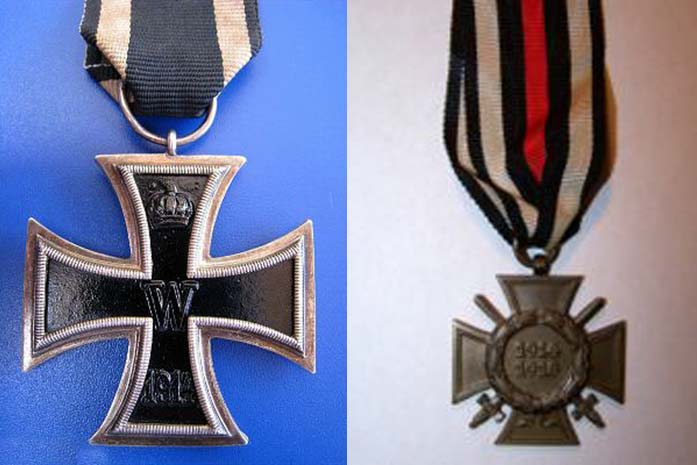
Left: 1914 Iron Cross, right: Ehrenkreuz fuer Frontkaempfer. Alt image: Clasp to Iron Cross, 1st Class. Awarded to Admiral Ruge.
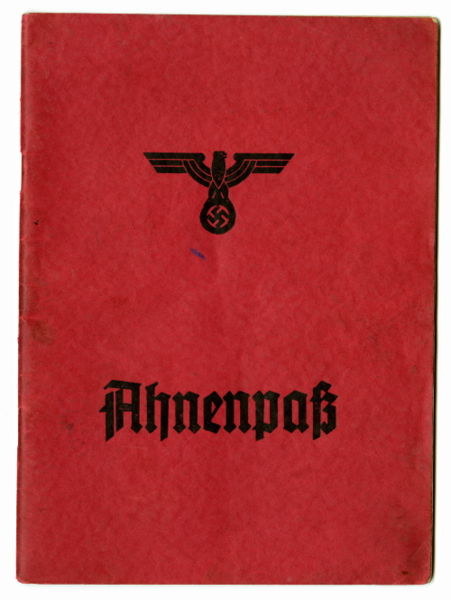
I am trying to find out more about German sources of information that we can use to update the “Geschichte der Familie Greeff” from 1941 to 2008 ("The History of the Family Greeff", by Victor Bredt. Marburg. 1941). Does anyone in the Greeff family have any old documents, photos or medals from the time of the Third Reich? In particular I would like to see digital photos of:
- Deutsches Einheits-Familien-Stammbuch mit Sippen- und Ahnentafel
- Ahnenpass
- War medals
- Mother's Medals
- Old paper photos
- Reichs Identity documents
My search for old German documents has been more narrowly focused on 20th century documents and photos, because several members of the Greeff family will be visiting Germany in September 2009, specifically to do research about the Greeff family. The primary objective of this research expitition will be to try to establish how the different branches of the Greeff family, globally, are related to each other, and how their common roots in Germany tie to each other. This means that we will be researching the ancestors of every Greeff who ever emigrated from Germany, regardless of whether they went to South Africa, America, or any other country. We shall give specific attention to Matthias Greeff, Friedrich Greeff and the Family of Emil Ernst Greeff, who went to America. We shall also try to find out about Jacob Greeff, who emigrated from Holland to America around 1940. I particularly want to know whether his ancestors were German or Dutch. We intend to draw as many members of the family as possible from the German speaking part of the family so that they can help to update the "Geshichte der Familie Greeff" from 1941 to 2008, which is an urgent and important task, because Viljoen Greeff and I intend to publish a new translated edition of the book before the global Greeff gathering in December 2010. In preparation for our visit to Germany I came across this interesting article:
Coming To Light
Written by James M. Beidler and Diane Haddad
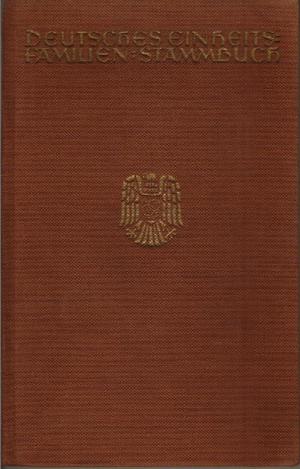 The Third Reich's genealogy directive produced these all-but-forgotten—until now— documents naming millions of German ancestors. The Third Reich's genealogy directive produced these all-but-forgotten—until now— documents naming millions of German ancestors.
From one of history's darkest eras has emerged a rich but controversial set of records that represents a potential genealogical windfall for some American researchers. As part of Adolf Hitler's obsession with "purifying" the German race, young men who joined the infamous Schutzstaffel—the Nazi party's military arm known as the SS—had to prove their genetic wholesomeness by submitting applications containing ancestor charts (Ahnentafeln in German). Similarly, starting in 1933, federal, state and local employees had to purchase Ahnenpasse from the Rasse und Siedlungs Hauptamt (Chief Office for Race and Resettlement). An individual had to get records showing his Aryan ancestry, then have a government official fill out this "ancestor passport."
As World War II ended, American forces seized those files, along with other Third Reich records, and microfilmed them in Berlin. Some were invaluable in prosecuting Nazi officials and tracing owners of property taken from Holocaust victims. But the Ahnentafel films languished largely unnoticed in the National Archives and Records Administration (NARA). Then in 2003, German genealogy expert John T. Humphrey happened upon them, and they've become an all-consuming research and book-writing project.
"This totally unexplored record group has enormous potential for Americans and Germans looking for ancestral information, but they're not readily accessible because they're not indexed and all the records are in German," says Humphrey, who encounters mostly German-speakers and professional historians during his NARA research sessions. "You need special skills to use them."
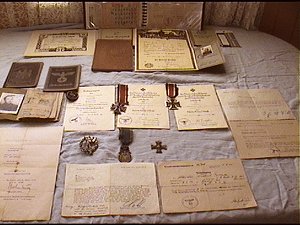 The files take up 7,800 microfilm rolls and document as many as 14 million people, since many of the charts stretch back six generations into the mid-1700s. They include vital records, medical information, correspondence and biographical details, as well as charts for prospective brides of SS members. The files take up 7,800 microfilm rolls and document as many as 14 million people, since many of the charts stretch back six generations into the mid-1700s. They include vital records, medical information, correspondence and biographical details, as well as charts for prospective brides of SS members.
Humphrey realizes the history of the German SS surrounds these records with controversy and, for some whose ancestors are named in the charts, could cast a shadow over an otherwise heady research discovery. But he stresses their significance for studying earlier history. "These records have information on Germans born long before there was a Nazi party or an Adolf Hitler, and many of those Germans were the parents and grandparents of people who had immigrated to the United States," he says. Even researchers whose ancestors aren't named in the Ahnentafeln could benefit: Since certain surnames are unique to particular areas of Germany, the records could point to likely ancestral places of origin.
The original Ahnentafeln are in Berlin’s Bundesarchiv, where privacy laws keep them inaccessible. “Some people whose information is in these recordsaren’t too much older than I am,” Humphrey says. The microfilm--part of Record Group 242, Collection of Foreign Recrods seized--is at NARA’s College Park, MD, facility (301-837-2000), <archives.gov/dcmetro/college-park> For more information on this records roup, see <archives.gov/research/captured-german-records>
This article originally appeared in the May 2007 Family Tree Magazine. Reprinted (by CJGC) with permission from Family Tree Magazine, copyright 2007 F+W Publications Inc. For more information or to subscribe, see www.familytreemagazine.com or call toll-free (888) 403-9002.
Central Jersey Genealgical Club CJGC Newsletter, July 2007
Source: Delaware and Lehigh Valleys Genealogy Club News. Vol. 4, No. 4 Fall, 2007. Website: www.rootsweb.com/~njdlvgc
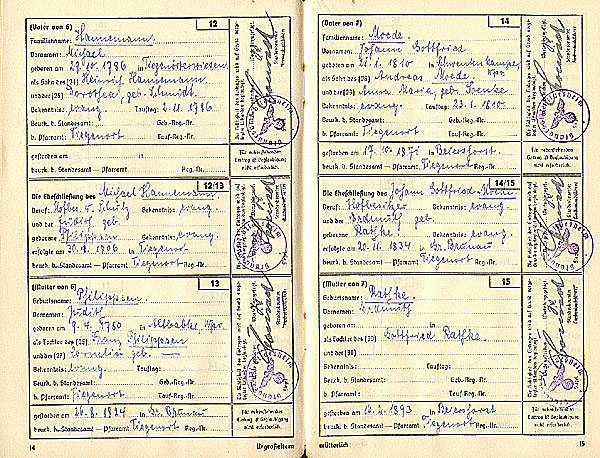
Contents of Stammbuch and Ahnenpass.
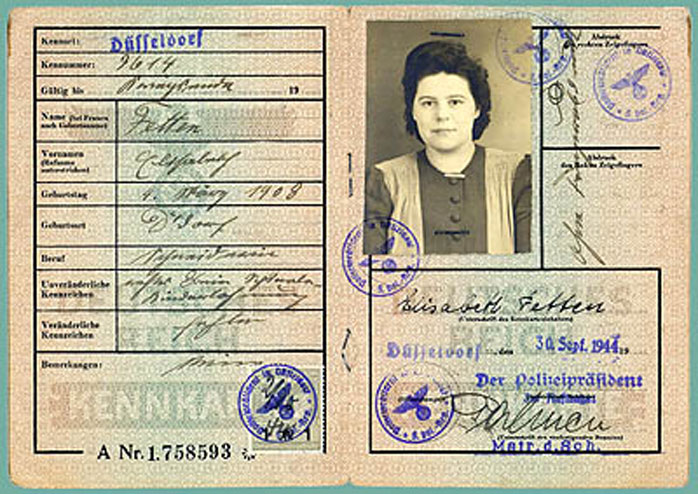
Kennkarte: A German ID book issued in Dusseldorf on 30 September 1944, with Suetterlin handwriting, which was taught in German schools from 1915 to 1941. This handwriting is very difficult to read, even for modern day Germans.
Do you have any kind of old Greeff ID books in your cupboard?
Greeff Farms
A regular column by Natanja Greeff
Burgher Greeff. Who is he?
I came across some information about "Burgher Greeff", who was a burgher, rather than "Burger Greeff". He was from the farm Slangfontein at Boetsap, which is in the general region of Prieska, South Africa. Ds J. A. van Blerk writes about him in "Op die Bermudas Beland" (1949. A. A. Balkema, Kaapstad).
Van Blerk says that he was G. P. Greeff (Gawie) and that he was 34 years old while interned on Bermuda island during the Anglo Boer War. Greeff had been shot through the back in the vicinity of border station during the Anglo Boer War and was paralysed from the waist down as a consequence. Van Berk had met Greeff while he was in hospital on Bermuda Islands. When Greeff had recovered sufficiently he was sent back to the prison camp to live among the other prisoners. He was not excused from hard labour and had to lie on the ground while chopping rocks with the rest of the gang. Later, after he had returned to South Africa, his condition improved to such an extent that he could walk without crutches or a walking stick. Although Greeff himself was a rebel in the year 1900 he was strongly opposed to the rebellion of 1914 and spoke out against it.
M. J. Greeff (25) and P. J. Greeff, both of Buffelshoek farm, Pearston, South Africa, were also interned on Bermuda Island. All three of these Greeff men had been found guilty of "murder and high treason" and had been sentenced to life imprisonment.
If you have any further information about G. P. Greeff, or the farm Slangfontein and its people, please e-mail Greeff@Greeff.info.
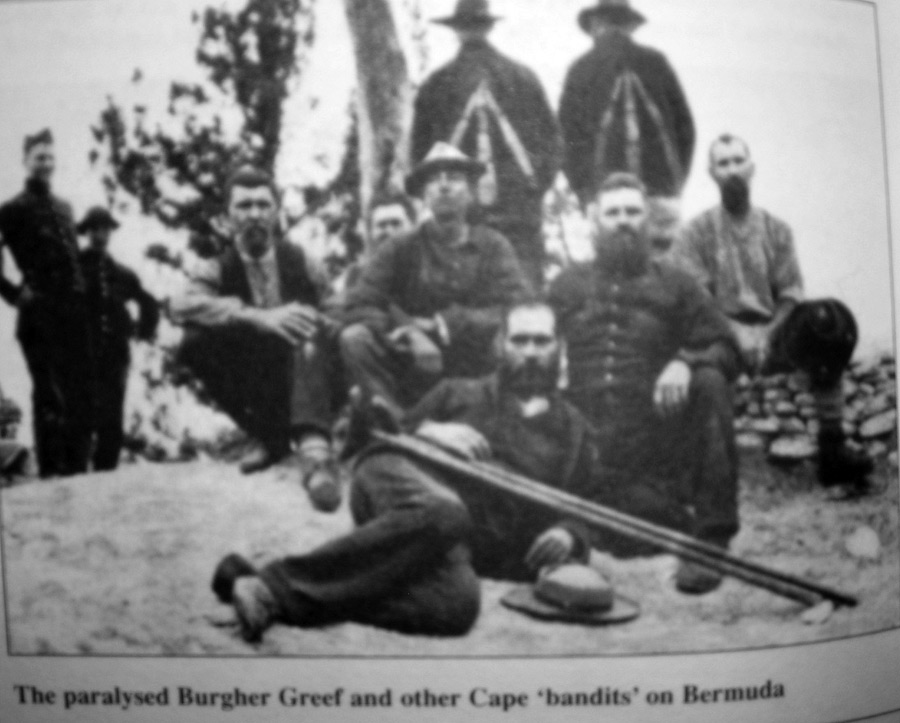
Vacancies, Jobs and Volunteers
Research positions in the Greeff Family Research.
1. Paid Work
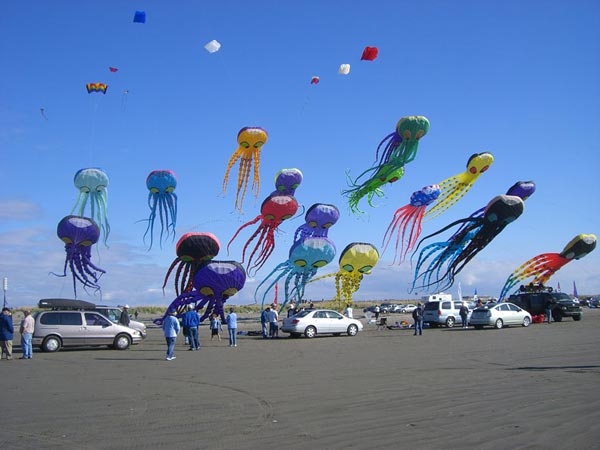 1.1 Kites. 1.1 Kites.
Do you know how to make good, big kites from Ripstop Nylon, Tyvek, or Nylon Tafetta, with carbon fibre rods? Do you have a sewing machine, and the neccessary sewing skills to make kites? Can you research how to make kites on the internet?
For many years I have used kites to draw attention to the site of festivities and or craft markets. Good, big kites are visible from very far, and lend an air of festivity to any event. Kites also arrouse curiosity in those who see them, and people tend to walk over and look. for some time I experimented with metallic foils that reflected the sun like a mirror. As the kite moved flashes of light were visible in the distance, and I have had people drive ten miles to come and see what the "strange flashes of light" were!
I am looking for someone who can make kites for Greeff festive occasions - weddings, birthdays, family gatherings, and so on. Big kites, with the Greeff coat of arms (Familiewapen) on the kite, and a long tail of highly reflective material to catch the sunlight. My plan is to have many kites in the air at the Wild Coast Gathering of the Greeff family in December 2010.
Set up your own business: make and sell promotional kites, starting with Greeff kites.
1.2 Photographs.
I have decided to offer several part time jobs to scholars, housewives and retired people in South Africa. I will pay all applicants One Rand for every photo they add to the Greeff Family Tree. The work is dead easy, and all you need is a computer, broadband and a bit of common sense. I will show you how to attach, at first, your own photos to your family records on the Greeff website. After that I will send you more photos from the thousands of records I hold on my computer. The aim is to get the entire Greeff family tree supported by photos. To see how absolutely lovely a tree can be with nice photos, just click on these links:
http://www.greeff.info/tng01/pedigree.php?personID=I4&tree=PedigreeAlisanGreeff
http://www.greeff.info/tng01/pedigree.php?personID=I2&tree=GreeffKwartierstaat
http://www.greeff.info/tng01/pedigree.php?personID=I11&tree=ASGreeff
http://www.greeff.info/tng01/pedigree.php?personID=I89&tree=Lichtenburgstam
http://www.greeff.info/tng01/pedigree.php?personID=I6&tree=PedigreeNMGreeff
Please email Francois Greeff at Greeff@Greeff.info if you want your branch of the tree to look the same!
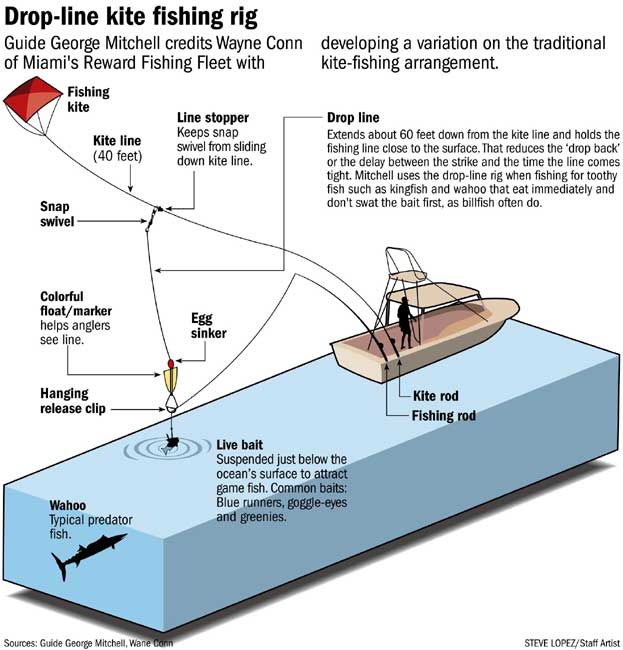 2. Volunteer Researcher to visit Germany 2. Volunteer Researcher to visit Germany
A group of people from South Africa will be visiting Germany in September 2009, as part of an organised Family History Research Tour, offered by the Northern Transvaal branch of the Genealogical Society of South Africa. I will personally pay the membership fees for each Greeff volunteer who joins the tour to become a member of the branch for a full year. The tour will be organised to accommodate the individual needs of the participants, and experts in Germany will assist in research and with translation. Arrangements will be made in advance to notify the appropriate research facilities of information and documents that will be needed. At least one volunteer, from any part of the world, is urgently needed to represent the Greeff family in this group. Ideally, three or four representatives would be best, so that different people can focus on different research areas, each of which is a big and important task. I can immediately think of Four major areas that need to be researched in Germany:
1. Matthias Greeff and his ancestors
2. Friedrich Greeff and his ancestors
3. Hugo Greeff and the ancestors of the Greeff family in America
4. The Greeff family in Germany generally - finding and contacting living Greeff people, photographing Greeff graves, church records, and and Greeff documents from archival repositories in Germany.
It makes much sense for us to try to include a descendant of Matthias Greeff, a descendant of Friedrich Greeff, and a descendant of Hugo Greeff.
This excusion offers a pleasant holiday in Germany, and is ideal for retired people.
Please let me know if you wish to be included in this research team in September 2009 (Greeff@Greeff.info).
|





 Three new pages have been added to the Greeff Family Web site. Click on the blue links to see the new pages. Don't skip the first two links because they are both very important and interesting pages, with much information.
Three new pages have been added to the Greeff Family Web site. Click on the blue links to see the new pages. Don't skip the first two links because they are both very important and interesting pages, with much information.
 Vice Admiral Friedrich Ruge was born in Leipzig, Germany December 24, 1894. He was the son
and grandson of German educators. Friedrich Ruge joined the German Imperial Navy as a cadet in March
1914. During World War I, he participated in the 1914, 1915, and 1916 Baltic Sea operations and in 1917
and 1918 destroyer raids in the North Sea and English Channel.
Vice Admiral Friedrich Ruge was born in Leipzig, Germany December 24, 1894. He was the son
and grandson of German educators. Friedrich Ruge joined the German Imperial Navy as a cadet in March
1914. During World War I, he participated in the 1914, 1915, and 1916 Baltic Sea operations and in 1917
and 1918 destroyer raids in the North Sea and English Channel. After World War II, Admiral Ruge spent several months as a prisoner of war, and in 1946 he
returned to Cuxhaven where he found employment as a writer, translator, and as a teacher of both English
and German. From 1949 to 1952 he was one of four German flag officers who comprised the Naval
Historical Team sponsored by the U.S. Navy at Bremerhaven. During this period he was also elected as a
political independent to the town council of Cuxhaven.
After World War II, Admiral Ruge spent several months as a prisoner of war, and in 1946 he
returned to Cuxhaven where he found employment as a writer, translator, and as a teacher of both English
and German. From 1949 to 1952 he was one of four German flag officers who comprised the Naval
Historical Team sponsored by the U.S. Navy at Bremerhaven. During this period he was also elected as a
political independent to the town council of Cuxhaven.







